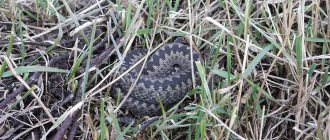Types, photos of moles
The Mole family (Talpidae) consists of 42 species in 17 genera of three subfamilies. Relatives of moles are muskrats (subfamily Desmaninae), which lead a semi-aquatic lifestyle.
Today in the subfamily Moles (Talpinae) there are 40 species in 15 genera.
Moles are common in Europe, North America and Asia. Not found at all in Africa.
Several species live in Russia: 4 species from the genus of common moles (Talpa) and 2 from the genus Mogera (Mogera).
The Siberian mole (T. altaica) is found from the Irtysh River to Transbaikalia.
Siberian mole
The Caucasian mole (T. caucasica) and small mole (T. levantis) live in the North Caucasus.
Caucasian mole
There are two species of eastern moles living in the Far East - the Ussuri mogera (Mogera robusta) and the Japanese one (M. wogura).
Mogera ussuriensis
But the most famous and widespread is the common (European) mole (Talpa europaea), whose habitat covers the forest and forest-steppe zones of the Russian Federation and partly Western Siberia.
There is a lot in common in the biology of different species of moles - they are all underground inhabitants, arranging extended galleries that serve for moving and collecting food, nesting chambers and storage areas for supplies. Unlike rodents, which use their teeth to dig the ground, all moles dig the ground with their front paws and are more sensitive to the hardness of the soil, which limits their spread and the depth of their galleries. The forelimbs of animals are perfectly suited for digging. The hands are very wide, almost round with five large powerful claws. Turned in a vertical plane with the palm facing outward, they resemble a pair of oars. The least strong paws are those of eastern moles, which live only in loose layers of soil and in litter, and do not make molehills.
The fur of moles is short, uniform in length and does not interfere with the animals’ movement in underground passages in any direction. Only the Chinese shrew species have hard spine fur, so they cannot move backwards in an underground tunnel. The fur color is uniform, usually brownish-black or gray.
Common mole
The most famous representative of the genus of common moles (Talpa) is the common mole itself, also known as the European mole (Talpa europaea).
The body length of the animal is 12–16 cm, weight 70–120 g. The body is roll-shaped, the tail is short. The muzzle is elongated and flattened. The eyes are very small. The hands are wide, edged with bristly hairs and flat claws, approximately equal on all fingers. The forelimb bears additional lateral bones on the side of the bases of the fifth and first fingers. The hands are turned with the palms back.
Common mole (Talpa europaea)
Thick and short velvety fur stands almost vertically, which allows the animal to move in narrow passages in any direction. Due to constant friction against the walls of the burrows, the mole's fur quickly wears out, so there are 3-4 molts during the year.
The common mole inhabits the forest and forest-steppe zones of Europe and the Trans-Urals from the north of the Iberian Peninsula to the south of Western Siberia. He prefers to settle in areas with forest vegetation and tries not to go out into open spaces. The main condition for existence is moderately moist soils rich in humus. Avoids areas with marshy and sandy soils.
Leads a solitary lifestyle. Each animal occupies a certain area and builds its own system of burrows. It is completely intolerant of the presence of individuals of its own species. Usually sedentary, but young moles during the settlement period move 1–4 km from their place of birth.
The mole makes its nest in dense soil, usually under tree roots, stumps or other objects protecting from above. The animal is characterized by polyphasic daily activity - periods of feeding are replaced by short periods of sleep, about 4 hours. The time spent awake depends on the abundance of food.
The mole has a high metabolic rate and is forced to eat quite often; after 10–12 hours of fasting, it dies.
Active all year round. In winter, it usually feeds in the ground layer of snow, partly by mining the forest floor, partly by digging tunnels in the snow.
The basis of the diet is earthworms. It also eats other invertebrates, mainly insects and their larvae; on occasion, it catches small rodents, lizards, and frogs caught in its passages.
Reproduction begins in March–April. The duration of pregnancy is about 40 days. There is 1 litter of 3–9 cubs per year. Newborns are naked, blind and helpless, but they grow very quickly, and within a month they already reach the size of adults. At the age of 1–1.5 months, the young disperse.
The lifespan of moles is 4-5 years.
Japanese shrew mole
Genus Japanese shrew moles (Urotrichus) are sometimes classified as a separate subfamily; less often approach American shrew moles (genus Neurotrichus). There are 2 species in the genus (sometimes each is classified as a separate genus). In appearance they resemble shrews with a bushy tail, but the forelimbs are digging, and the eyes are hidden under the skin.
The Japanese shrew mole (Urotrichus talpoides) lives on the Japanese islands of Honshu, Shikoku, Dogo and Tsushima. Found in forests and meadows with tall grass.
Japanese shrew mole (Urotrichus talpoides)
Body length is 5–10 cm. The front part of the muzzle is greatly elongated, the long movable proboscis is covered with vibrissae. The ears are small. The hands of the forelimbs are only slightly widened. The tail is quite long and pubescent. Sometimes fat reserves are deposited in the tail.
Very common in suitable biotopes. It makes passages in the litter and upper layers of soil, actively moves in search of food also on the surface of the ground, sometimes climbing low trees and bushes. In winter, these animals are sometimes found frozen in birdhouses hanging at a height of 2–4 meters. Unlike ordinary moles, they are quite tolerant of representatives of their own species.
Reproduction occurs in April–May. The female brings one litter per year, usually consisting of three cubs.
Star-nosed mole
Star-nosed moles, or star-nosed moles (genus Condylura), living in North America, are very similar in structure to an ordinary mole, but have a long tail, and prefer to search for their prey by actively swimming and diving in the water.
This species boasts a unique nose, divided into many small tentacles that resemble coral in appearance. The tentacles are covered with thousands of receptors and help the mole in searching for food.
In the photo, the star-nosed mole shows off its amazing nose.
Star-nosed mole
If most species prefer a solitary lifestyle, then the starfish is an exception to this rule. In this species, the male and female can live together during the winter.
Lifestyle of moles
The mole spends most of its time underground. Most individuals are active both during the day and at night. During the day they have several periods of activity lasting 3-4 hours, and during breaks the animals rest in the nest.
Typically, moles lead a sedentary lifestyle, but in hot and dry weather, some individuals leave their usual areas and move 1-1.5 km away from them, going to rivers to drink.
ARVE Error: Invalid URL »https://www.youtube.com/v/IrWSukExlxo» in url
Die-hard loners
Most species lead a solitary lifestyle. Each animal has its own individual area. Moles zealously defend their entire territory, or at least a significant part of it. This applies not only to males, but also to females, who are especially aggressive towards members of their own sex during the breeding season. Females and males meet only for a short time to procreate. After mating has occurred, the male disappears from the life of the female, taking no part either in arranging the nest for the offspring or in their upbringing.
Population densities vary by species and habitat. In spring, males significantly increase the size of their territories. In a mole population, there are usually from 5 to 30 individuals per 1 hectare.
Although neighboring animals each live in their own tunnel system, their territories still overlap to some extent. However, they try to avoid encounters with each other and feed in non-adjacent parts of their areas.
When a mole dies, the neighbors quickly notice its absence, and the most efficient one seizes the vacated territory. Sometimes a plot may be divided between neighbors.
Moles communicate their presence and ownership of a specific area using scent marks. Both males and females have preputial glands that produce a strong-smelling secretion. It accumulates in the fur on the animal’s belly, and when moving, it spreads along the bottom of the tunnels. In the absence of such a smell, the territory is quickly captured.
What do moles eat?
Most of the mole's diet consists of invertebrates. About 90% of food is obtained from tunnels (feeding passages). The animals eat everything that is available in a certain place, but if there is a choice, they prefer earthworms, beetle larvae and slugs.
In October and November, the common mole stores supplies of worms immobilized by a bite next to the nest. They found reserves of worms and insect larvae in his possession exceeding 2 kg!
Molehills
Moles spend most of their time underground, but when developing a new area they often come to the surface. The passages of one animal occupy a huge area and are of two types. Residential passages run at a depth of 6–90 cm, have a diameter of about 5 cm and are used to move the animal from the nest to feeding areas, watering places, etc. Moves of the second type are used to search for food. They are laid close to the surface of the earth in a layer where earthworms and soil insects are most common and the soil is minimally dense. The network of passages covers large areas. Traces of hunting can be seen on the surface of the earth in the form of long soil ridges formed by swollen arches of passages. Such traces remain when a mole digs too close to the surface of the soil and the arch of the passage does not withstand the pressure of the animal.
When digging new tunnels, the mole rests with its hind limbs and digs with its front limbs, which alternately cut into the soil and move to the side and back. Then the animal compacts the soil with its powerful head, pressing it into the walls of the passage. When constructing holes at a depth of more than 10 cm, the mole can no longer lift the arch with its head and is forced to throw the excavated soil to the surface. Thanks to this, the presence of a residential passage can be detected by characteristic heaps of discarded soil - molehills. They can be 15-25 cm high and reach one meter in diameter. Usually molehills are located in small groups.
Molehills are the most obvious sign of the presence of these animals, and often the only thing people see.
The appearance of offspring
The mating season for moles is short. Breeding time varies depending on the geographical latitude of the habitat.
Moles usually produce only one litter per year. Pregnancy, depending on the species, lasts from 30 days (in the common mole) to 42 days (in the Eastern American mole).
The young are born in the nest, and a brood usually contains 2 to 7 young. Babies are born naked, but after 2 weeks they are completely covered with fur, and at the age of 22 days they open their eyes. For about a month, small moles feed on their mother's milk, and at the age of about 35 days they leave their mother's nest and go in search of unoccupied territory. At this time, many young animals die from the teeth of predators or under the wheels of cars.
Enemies in nature
In nature, moles have few enemies: due to the specific smell, predators practically do not eat these animals. Foxes, cats and dogs catch them more out of “sporting” interest. And only badgers can eat them.
However, pets to some extent control the number of moles and rodents near humans. It has been noticed that in private houses and cottages where there are pets - cats and dogs, there are practically no moles in the areas.
Effective ways to get rid of moles
There are many options for how to deal with annoying mammals. Most of them are safe for humans, but cause great discomfort to moles. Some methods are less effective, others help get rid of uninvited guests for a long time. Even if the moles have not chosen the site, but settled with neighbors in the country, it is necessary to urgently take protective measures.
Traps
Mole traps are effective and have been used by summer residents for decades. It is enough to purchase an inexpensive wire trap at any gardening store. Before purchasing, you need to make sure that the product is of high quality, since there is a possibility that it will fall apart after operation.
It is important to install the mole catcher correctly. It is better to place mole traps in groups of 2. The rings are directed in different directions, because it is impossible to predict where the animal will go.
There are modern traps from European manufacturers. They are more expensive than wire devices and show no less efficiency. Manufacturers recommend placing them on ledges. Experienced users advise installing it a little wider, because large, thick moles are often found in nature.
It is not advisable to place wire and other traps in all the holes in the passages, because there can be a lot of them. You should walk around the entire perimeter of the area and find the places through which the animal moves most often. This is explained by the fact that in most cases moles do not live in areas. They dig tunnels in the ground to eat worms and insects, and go there to search for food along the same routes.
Mole traps are installed in places with hard soil. If the ground is soft and loose, the animal will have no problem burying or moving the device.
Flooding
Mole dungeons can be filled with large amounts of water. It is important to do this before planting crops to avoid damaging them. An improvised dam made of plastic film, stones and other suitable materials must be installed around the perimeter. At the same time, it is important to protect the façade and foundation of a residential building, as well as other buildings. After a few days, the dam is dismantled. Three to four days are enough for moles to leave an area that is too wet and go in search of a new habitat.
Wind turbines
The design of the device plays a key role. It will not have any effect over a large area. For this reason, large areas will have to use many windmills.
All wind turbines must have a long base that can be buried deep into the soil. The vibrations created repel not only moles, but also small rodents.
You can make a windmill yourself. Procedure:
- attach a narrow metal pipe 2 m long to a small board from below;
- dig the tube into the ground 1-1.5 m;
- plastic bottles on metal plates are attached to the edges of the vertical board;
- place the bottles so that the device resembles a sunflower.
You can resort to a simpler method. It is enough to bury plastic bottles in the ground. The necks should be above the ground and pointing upward. When there are gusts of wind, a strong rumble will appear, which will frighten the moles. It has been proven that noise and vibration cause uninvited guests to leave areas and not return to them.
Moles: benefits and harm
The common mole is of greatest economic importance. In the past, this animal was considered as an object of fur trade. Mole fur is beautiful and quite durable. It gained particular popularity at the end of the 19th and beginning of the 20th centuries, when the harvesting of skins was carried out on such a massive scale that the species began to need protection. Record figures were achieved in 1928, when 20 million skins were mined worldwide. In the USSR, mole hunting was carried out until the 1980s. Today in Russia they are not mined, which has become one of the reasons for the increase in their numbers. In addition, mild winters and improved conditions for its reproduction and nutrition, which include the spread of well-groomed lawns and flower beds, and an increase in the number of greenhouses for growing plants, favor the growth of common mole populations.
By exterminating plant pests such as chafer larvae, click beetles, mole crickets and others, moles undoubtedly benefit agriculture and forestry. It is impossible not to note their contribution to the processes of soil formation: the animals loosen the soil and, thanks to their tunnels, the process of aeration occurs in the soil, which can save the area from becoming swampy.
However, we also have to deal with the negative consequences of the digging activity of these animals. Thus, numerous molehills reduce the productivity of pastures, lead to changes in plant communities, and damage to agricultural equipment during mechanized harvesting. Moles do not feed directly on plants, but when digging they can cause direct harm to them, pushing seedlings out of the ground or digging up roots, which, depending on weather conditions, leads to the plants getting wet, drying out, or freezing. The construction of burrows by moles sometimes leads to damage to drainage systems.
However, it is necessary to distinguish the harmful activities of moles from the harm caused by mouse-like rodents. First of all, you need to pay attention to the presence or absence of gnawed plants. If gnaws are found on plants, the culprits are mouse-like rodents. In rodents, burrows usually have open exits, while moles create molehills, which, as a rule, do not have an opening. Molehills are often confused with the soil discharges of the water vole, which switches to underground habitat in the fall. Invasion by a vole may be indicated by flattened outbursts, gnawed roots, or plant parts stored in burrows.
The fate of many moles around the world is to die at the hands of farmers. For many centuries they have been caught in traps and poisoned with chemicals.
How to catch moles with traps
There are quite a large number of ready-made traps for moles.
It can be:
- Scissor traps shown in the photo.
Scissor traps
Their advantages:
- easy to install, just press the handles into the ground and cock the special mechanism;
- the activation of devices can be observed from a distance;
- the sensitivity of the traps is easily adjusted;
- The design is simple, but quite reliable.
Flaws:
- The device is difficult to install in the opening of a mole passage, especially if it is deep. It must be hidden and located in such a way that the moving parts of the device are not obstructed by stones, pieces of peat, or lumps of earth. The tight handles of the device make it difficult to easily hide it in a passage without access to light to ensure reliable operation;
- at low temperatures, the handles in the ground freeze and the trap may not work;
- Heavy rain can wash away the soil, making the trap detectable;
- It is difficult to install the device in openings that are too small or deep for moles.
- Tunnel trap.
Tunnel trap
For a mole trap, the most suitable design is with a half-tunnel. In this case, the trap is easily hidden, the working parts do not jam when foreign objects enter.
The advantages of the device include:
- They are easily installed in the mole passage. In this case, a little earth is poured on top to stop the access of light;
- kills pests quickly and effectively;
- the sensitivity of the design is easily adjusted;
- from stones and peat, working parts almost do not jam;
- when covering the trap with peat or a board, its operation will not be affected by frost and rain;
- can be used in shallow and deep tunnels;
- can neutralize two moles at the same time.
Design disadvantages:
- due to the complex installation, you will need to first study the instructions;
- If installed incorrectly, you can easily get injured;
- it is not possible to see the device triggering from a distance;
- On the surface of the earth, the device is invisible, which makes it difficult to find the trap if the pointer is lost.
- Plunger trap.
Plunger trap
This device differs from the previous ones. Its advantages include:
- The trap is not activated by moving the mole's paws or nose, but by pushing through the earth to restore the previously dug tunnel. This device is very good to use when there are moles avoiding traps;
- This is a very powerful trap that requires a little practice when used;
- there is no need for adjustment before operation;
- relatively easy to install, but requires a little time, especially if the soil is rocky.
The disadvantages are:
- If the ground is rocky, jamming may occur, as with a scissor trap;
- Skills are required to correctly install the device, otherwise it may not work, and moles will freely pass through it into the basement.
- Humane devices for catching moles. These are ineffective devices, which include:
- mole trap-pipe, which is a hollow pipe with movable doors on both sides;
Mole trap-pipe
- ultrasonic device.
Ultrasonic device for repelling moles











